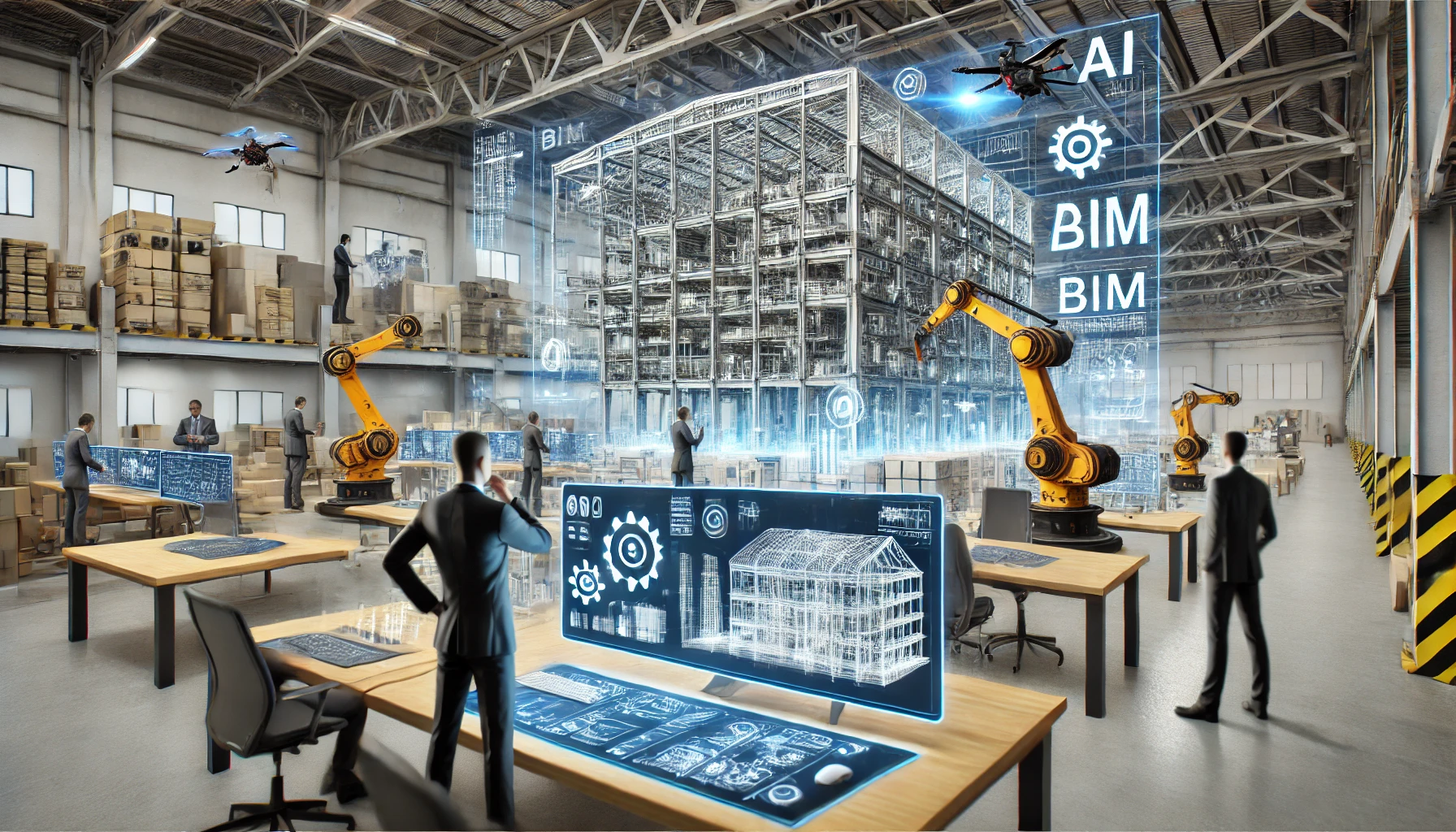How Industrialized Construction is Changing the Role of Architects and Engineers
Industrialized construction is transforming the traditional roles of architects and engineers, shifting their focus from on-site problem-solving to digital design, automation, and prefabrication planning. With the rise of modular building, AI-driven design, and smart factories, professionals in the field must adapt to new technologies and workflows.
But how exactly is industrialized construction reshaping architecture and engineering? Let’s explore the key changes, challenges, and opportunities in this evolving industry.
How Industrialized Construction is Changing Architecture and Engineering
1. Digital Design and BIM (Building Information Modeling) Integration
🔹 Before: Architects created 2D blueprints, and engineers manually adjusted plans based on construction needs.
🔹 Now: BIM software allows architects and engineers to collaborate in real-time, creating detailed 3D models with precise measurements, materials, and structural details.
✅ Impact:
- Reduces design errors and construction delays.
- Allows real-time adjustments before manufacturing begins.
- Enhances collaboration between architects, engineers, and contractors.
2. AI-Driven and Parametric Design
🔹 Before: Designs were created manually, with limited flexibility for customization.
🔹 Now: AI-powered tools analyze environmental conditions, costs, and materials to generate the most efficient and sustainable building designs.
✅ Impact:
- Faster decision-making with AI-driven optimization.
- More eco-friendly and energy-efficient designs.
- Allows for mass customization of prefabricated buildings.
3. Shift Toward Prefabrication and Modular Design
🔹 Before: Architects and engineers designed buildings for on-site construction, dealing with unpredictable variables (weather, labor, material shortages).
🔹 Now: They design for factory-based manufacturing, ensuring components are standardized and optimized for mass production.
✅ Impact:
- Requires new skills in modular design and prefabrication principles.
- Increases efficiency and repeatability in large-scale projects.
- Reduces waste and construction time.
4. Robotics and Automation in Construction
🔹 Before: Engineers supervised manual labor, ensuring safety and precision on-site.
🔹 Now: They program and oversee robotic assembly lines in smart factories and construction sites.
✅ Impact:
- Engineers must learn automation and robotic integration.
- Reduces human errors in construction.
- Increases safety and efficiency.
5. Sustainability and Smart Materials
🔹 Before: Material selection was based on availability and cost.
🔹 Now: Architects and engineers focus on recyclable, low-carbon, and energy-efficient materials.
✅ Impact:
- Smarter, greener buildings with improved performance.
- Life cycle analysis for long-term sustainability planning.
- Better integration of renewable energy solutions (solar panels, smart grids).
New Skills Architects and Engineers Must Develop
✅ BIM and Digital Twin Technology – Creating and managing intelligent 3D models.
✅ AI-Powered Design – Using machine learning for efficient layouts and material selection.
✅ Automation and Robotics – Overseeing robotic assembly and prefabrication processes.
✅ Modular Construction Techniques – Designing for off-site manufacturing and mass production.
✅ Sustainable Design Strategies – Implementing eco-friendly materials and energy-efficient systems.
Challenges in Adapting to Industrialized Construction
🔹 Resistance to Change – Traditional architects and engineers must adapt to digital workflows.
🔹 Need for Specialized Training – Universities and training programs must update curriculums to include modular and AI-driven design.
🔹 Integration with Traditional Methods – Hybrid projects require balancing industrialized techniques with conventional construction.
The Future of Architects and Engineers in Industrialized Construction
🔹 AI-Assisted Architecture: Architects will use AI to generate optimized designs based on sustainability, cost, and function.
🔹 Fully Digitalized Engineering: Engineers will rely on real-time data and automation for structural analysis and project management.
🔹 Smart Cities and Urban Planning: Future cities will be designed using AI-driven simulations, modular housing, and prefabricated infrastructure.
As industrialized construction advances, architects and engineers will play a more strategic, technology-driven role, shaping the future of smart, sustainable, and efficient cities.
Would you prefer a traditional or AI-assisted approach to designing buildings?

